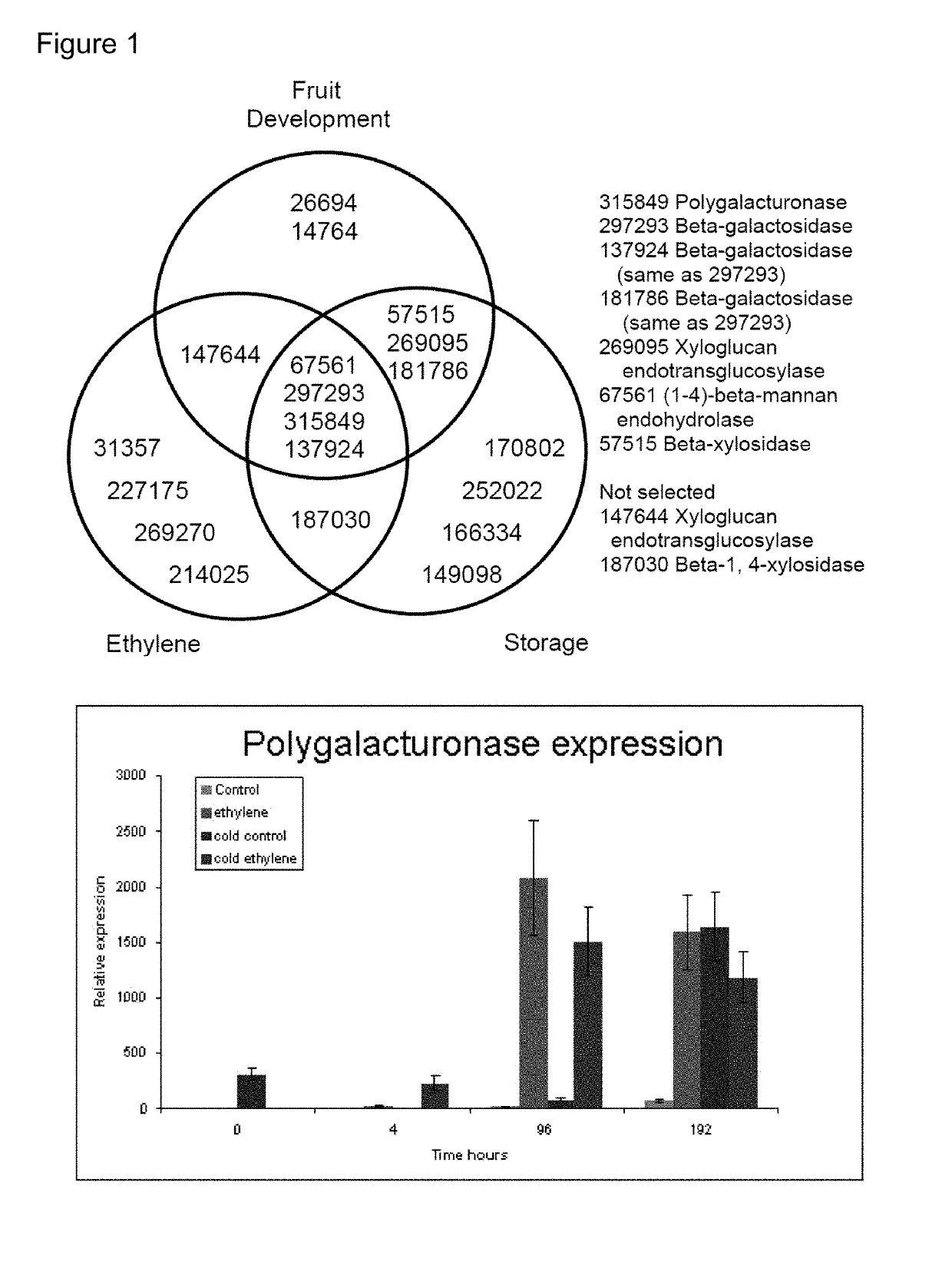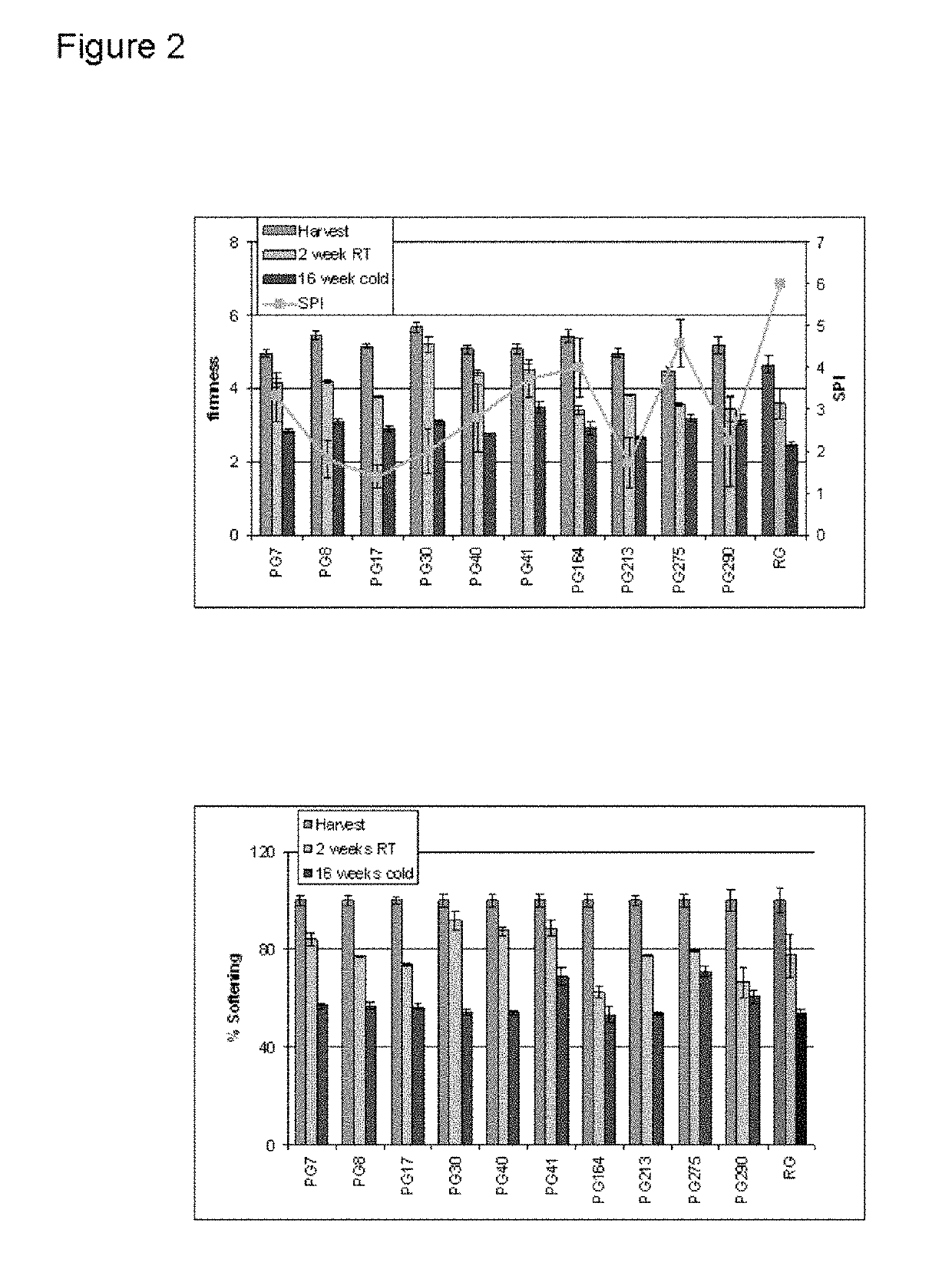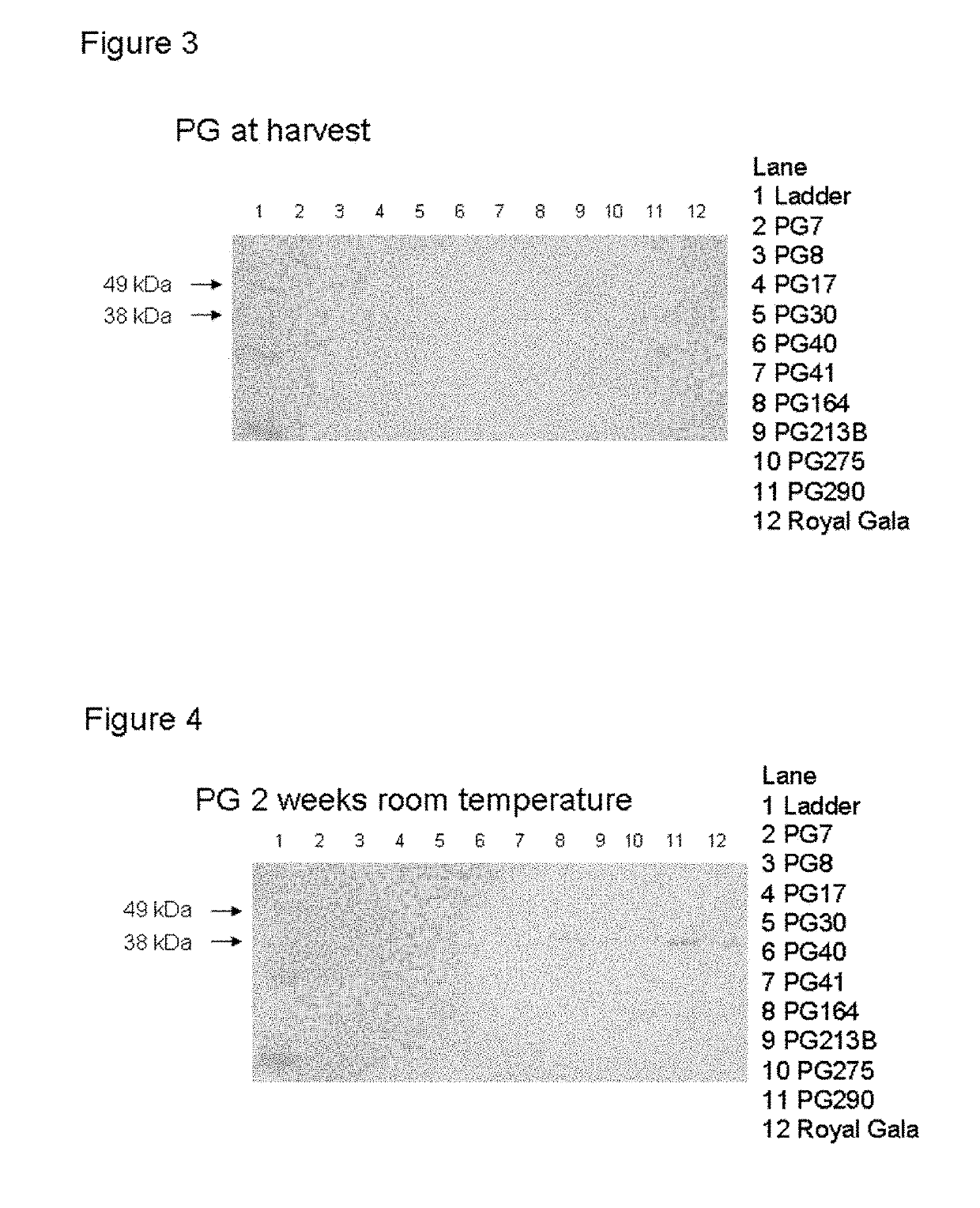Methods and Compositions for Increasing Storage-Life of Fruit
a technology of compositions and fruits, applied in the field of methods and compositions for increasing the storage life of fruits, can solve the problems of spoiled fruit being a major problem, increasing the cost of non-spoiled fruit to the consumer, affecting the quality of fruit, etc., and achieves the effect of increasing the storage life after harves
- Summary
- Abstract
- Description
- Claims
- Application Information
AI Technical Summary
Benefits of technology
Problems solved by technology
Method used
Image
Examples
example 1
Selection of MdPG1 as a Candidate Gene for Altering Post-Harvest Storage Life in Apple Fruit
[0296]Three microarray experiments that measured apples that underwent ripening were analysed. These included an ethylene induced ripening series (Schaffer et al 2007), a fruit development series (Janssen et al 2008) and a cold storage treatment (manuscript in preparation). 290 cell wall related genes were identified by homology screening in the HortResearch Apple EST collection. Of these, 10 increased in expression late in fruit development, 9 increased in expression upon the addition of exogenous ethylene, and 10 increased in expression during 2 and a half months of cold storage. Of these genes, three were found to be in common to all treatments. Of the three, MdPG1 showed the greatest change in expression. Further analysis of this gene in transgenic apple lines down-regulated for the MdACO gene showed that MdPG1 is up-regulated in an ethylene dependent and cold dependent ripening manner (F...
example 2
Production of Plants with Reduced Expression of MdPG1
[0300]Ten transgenic ‘Royal Gala’ lines were created containing MdPG1 expressed in an antisense orientation driven by a strong constitutive promoter (35S promoter). The fruit-specific polygalacturonase cDNA clone MdPG1 (formerly GDPG1, Atkinson 1994), was cloned into pART7 as described previously (Atkinson et al. 2002). A clone with the PG gene in the antisense orientation was digested with NotI and cloned into the binary vector pART27. The binary was electroporated into Agrobacterium tumefaciens strain LBA4404. Transgenic apple ‘Royal Gala’ shoots were produced using the method of Yao et al. (1995) and maintained in a containment greenhouse under identical conditions (ambient light and temperature) to wild-type plants. Plants were transferred to chillers for 8-10 weeks each year to meet winter chilling requirements. Flowers were hand-pollinated each spring and fruit harvested in autumn when aroma volatiles could be detected.
example 3
Fruit of Plants Produced by the Methods of the Invention Show Reduced Softening During Post-Harvest Storage
[0301]Five lines, of the 10 described in Example 2, showed less softening than the wild type control after two weeks at room temperature (FIG. 2), and 2 lines (PG275 and PG41) showed significantly less softening after 16 weeks at 5° C. storage. This correlated with previous experiments where apples from the line PG41 showed much reduced softening compared to the control apples. The decreased softening in this line has been shown for fruit collected over 3 growing seasons (Table 1).
[0302]Firmness was measured using a puncture test according to standard industry practise (Blanpied et al., 1978). This involved the localised removal of skin from two opposing locations on the fruit equator, and recording the maximum force while driving a 7.9 mm cylindrical probe into the outer cortex to a constant depth (8 mm) at a fixed speed (4 mm / s). The puncture test and data capture was perform...
PUM
| Property | Measurement | Unit |
|---|---|---|
| Tm | aaaaa | aaaaa |
| time | aaaaa | aaaaa |
| time | aaaaa | aaaaa |
Abstract
Description
Claims
Application Information
 Login to View More
Login to View More - R&D
- Intellectual Property
- Life Sciences
- Materials
- Tech Scout
- Unparalleled Data Quality
- Higher Quality Content
- 60% Fewer Hallucinations
Browse by: Latest US Patents, China's latest patents, Technical Efficacy Thesaurus, Application Domain, Technology Topic, Popular Technical Reports.
© 2025 PatSnap. All rights reserved.Legal|Privacy policy|Modern Slavery Act Transparency Statement|Sitemap|About US| Contact US: help@patsnap.com



